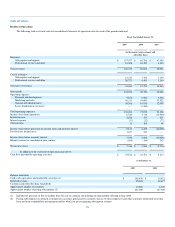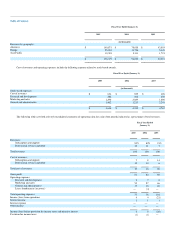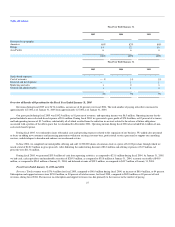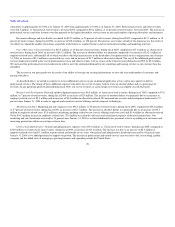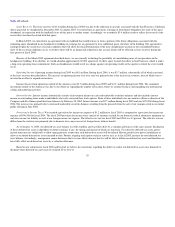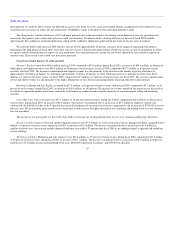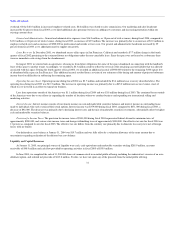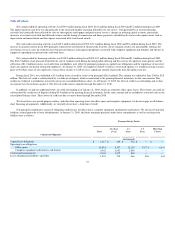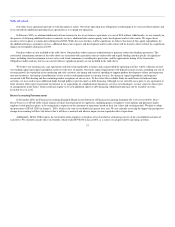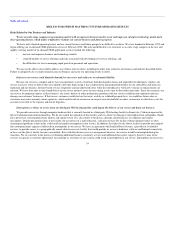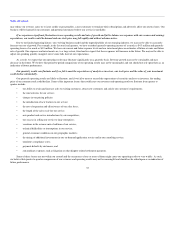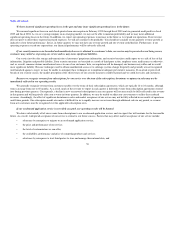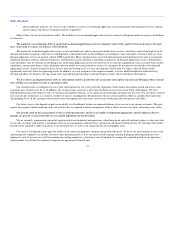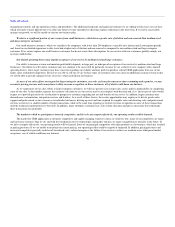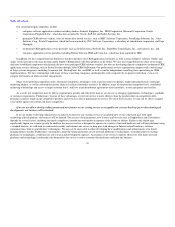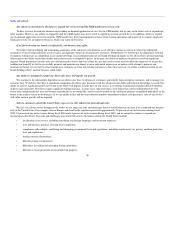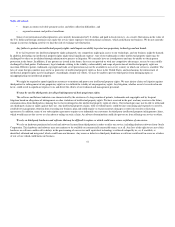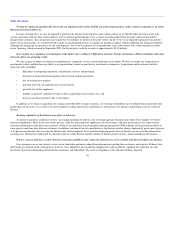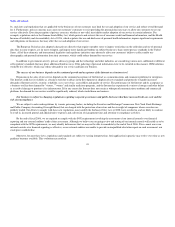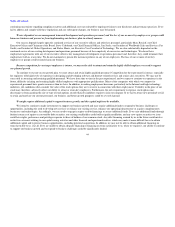Salesforce.com 2004 Annual Report Download - page 38
Download and view the complete annual report
Please find page 38 of the 2004 Salesforce.com annual report below. You can navigate through the pages in the report by either clicking on the pages listed below, or by using the keyword search tool below to find specific information within the annual report.
Table of Contents
RISK FACTORS WHICH MAY IMPACT FUTURE OPERATING RESULTS
Risks Related to Our Business and Industry
We are an early-stage company in an emerging market with an unproven business model, a new and unproven enterprise technology model and a
short operating history, which makes it difficult to evaluate our current business and future prospects.
We have only a limited operating history and our current business and future prospects are difficult to evaluate. We were founded in February 1999 and
began offering our on-demand CRM application service in February 2000. The risks and difficulties we encounter as an early-stage company in the new and
rapidly evolving market of on-demand CRM application services include the following:
• our new and unproven business and technology models;
• a limited number of service offerings and risks associated with developing new service offerings; and
• the difficulties we face in managing rapid growth in personnel and operations.
We may not be able to successfully address any of these risks or others, including the other risks related to our business and industry described below.
Failure to adequately do so could seriously harm our business and cause our operating results to suffer.
Defects in our service could diminish demand for our service and subject us to substantial liability.
Because our service is complex and we have incorporated a variety of software both developed in-house and acquired from third party vendors, our
service may have errors or defects that users identify after they begin using it that could result in unanticipated downtime for our subscribers and harm our
reputation and our business. Internet-based services frequently contain undetected errors when first introduced or when new versions or enhancements are
released. We have from time to time found defects in our service and new errors in our existing service may be detected in the future. Since our customers use
our service for important aspects of their business, any errors, defects or other performance problems with our service could hurt our reputation and may
damage our customers' businesses. If that occurs, customers could elect not to renew, or delay or withhold payment to us, we could lose future sales or
customers may make warranty claims against us, which could result in an increase in our provision for doubtful accounts, an increase in collection cycles for
accounts receivable or the expense and risk of litigation.
Interruptions or delays in service from our third-party Web hosting facility could impair the delivery of our service and harm our business.
We provide our service through computer hardware that is currently located in a third-party Web hosting facility in Sunnyvale, California operated by
Qwest Communications International Inc. We do not control the operation of this facility, and it is subject to damage or interruption from earthquakes, floods,
fires, power loss, telecommunications failures and similar events. It is also subject to break-ins, sabotage, intentional acts of vandalism and similar
misconduct. Despite precautions taken at the facility, the occurrence of a natural disaster, a decision to close the facility without adequate notice or other
unanticipated problems at the facility could result in lengthy interruptions in our service. In addition, the failure by the Qwest facility to provide our required
data communications capacity could result in interruptions in our service. We have an agreement with SunGard Data Systems, a provider of availability
services, to provide access to a geographically remote disaster recovery facility that would provide us access to hardware, software and Internet connectivity
in the event the Qwest facility becomes unavailable. Even with this disaster recovery arrangement, however, our service would be interrupted during the
transition. We are currently in the process of obtaining additional business continuity services and additional data center capacity, however, none of the
services or capacity is currently operational. Any damage to, or failure of, our systems could result in interruptions in our service. Interruptions in our service
34


